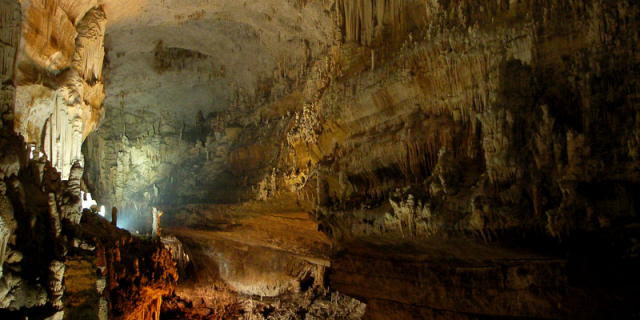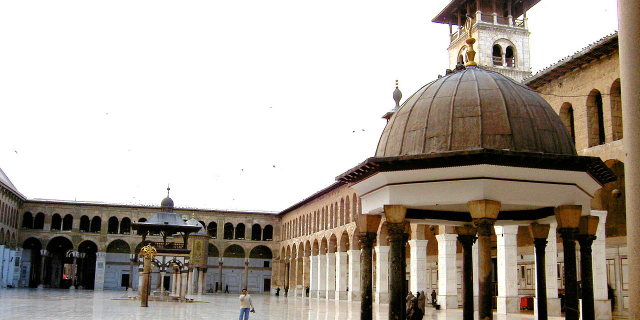Anjar, Lebanon
Anjar (meaning "unresolved or running river"; Arabic: عنجر / ALA-LC: ‘Anjar; also known as Hawsh Mousa (Arabic: حوش موسى / Ḥawsh Mūsá), is a town of Lebanon, near the Syrian border, located in the Bekaa Valley. The population is 2,400, consisting almost entirely of Armenians. The total area is about twenty square kilometers (7.7 square miles). Since 1984, the ruins of the Umayyad settlement of Anjar are recognized by UNESCO as a World Heritage Site.
The town's foundation is normally attributed to the Umayyad caliph al-Walid I, at the beginning of the 8th century, as a palace-city. Syriac graffiti found in the quarry from which the best stone was extracted offer the year 714, and there are Byzantine and Syriac sources attributing the establishment of the town to Umayyad princes, with one Syriac chronicle mentioning Walid I by name, while the Byzantine chronicler Theophanes the Confessor recorded that it was Walid's son, al-Abbas, who started building the town in 709-10.[1] Historian Jere L. Bacharach accepts Theophanes' date.[citation needed] Although earlier materials were re-used, much of the city is built on virgin soil.[1]
After being abandoned in later years, Anjar was resettled in 1939 with several thousand Armenian refugees from the Musa Dagh area. Its neighborhoods are named after the six villages of Musa Dagh: Haji Habibli, Kebusiyeh, Vakif, Kheder Bek, Yoghunoluk and Bitias.[2]
During the civil war, the Syrian Army chose Anjar as one of its main military bases in the Beqaa Valley and the headquarters of its intelligence services.[3]
Following the civil war, Anjar started to rebuild economically. Many of its inhabitants immigrated to other countries, mainly to Europe, Canada, and the United States. Nevertheless, today Anjar is an example to many other entities in the region because of its low crime rate[citation needed], reduced air pollution, and living standards. During the 2020 COVID-19 pandemic, the village rapidly imposed strict measures and set an example for the rest of the country.[citation needed]





























Add new comment